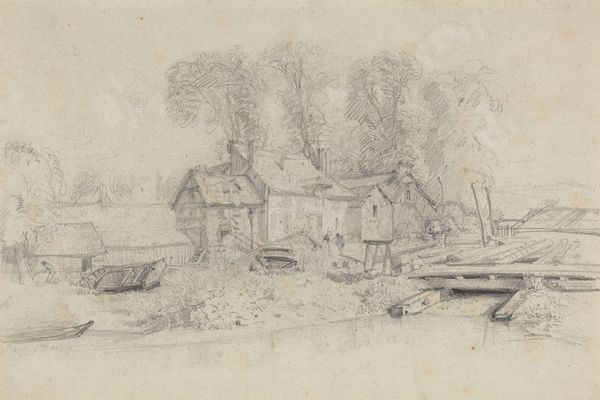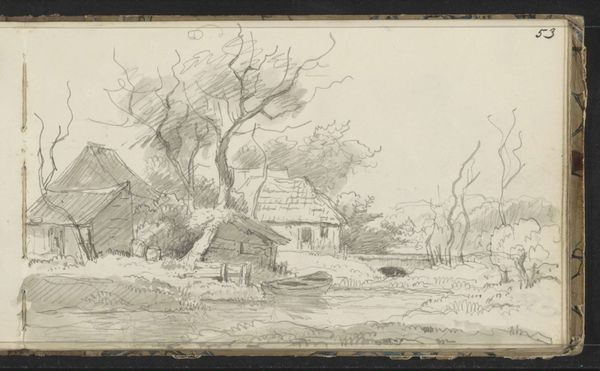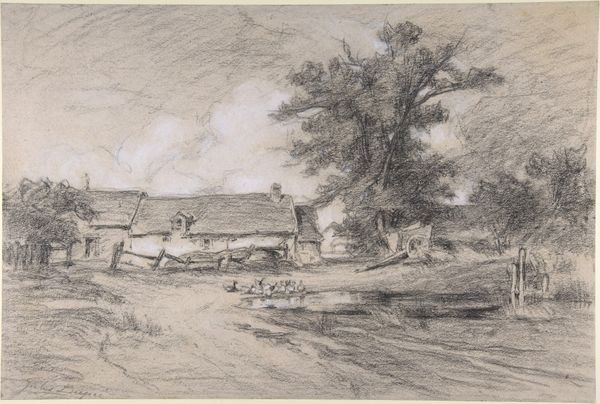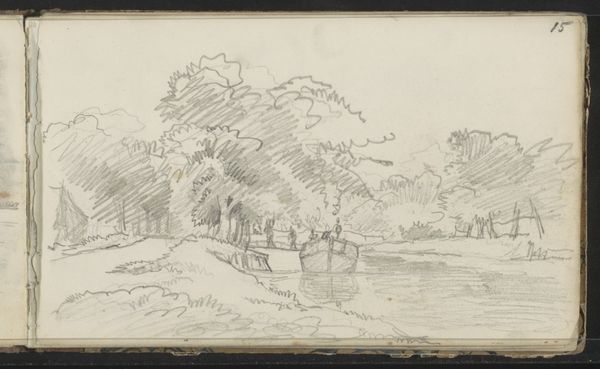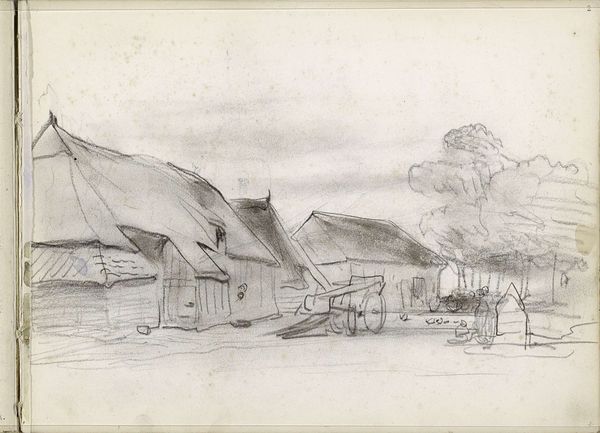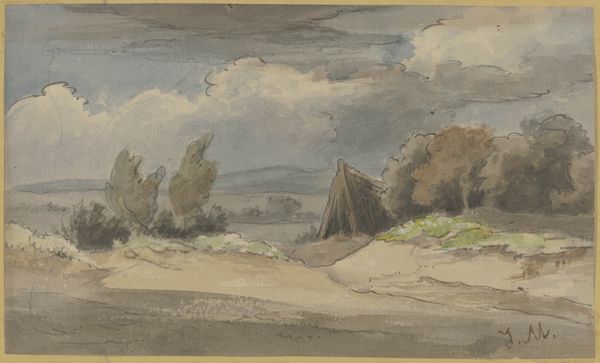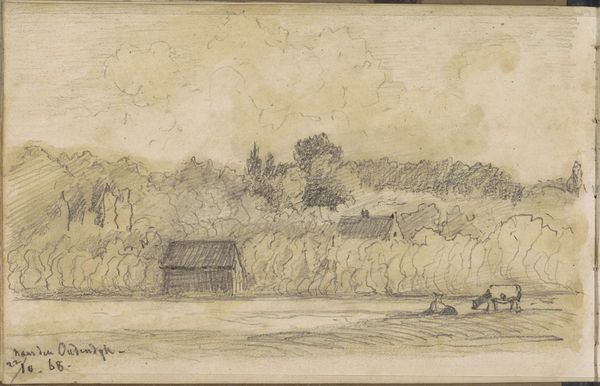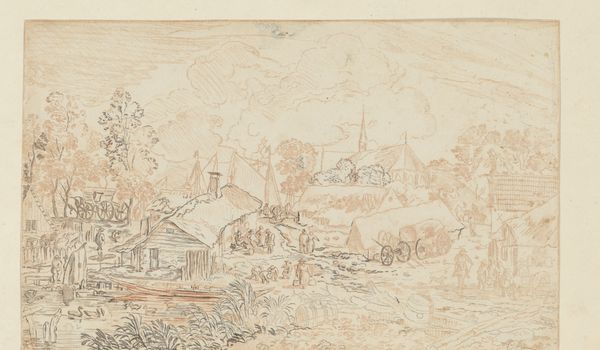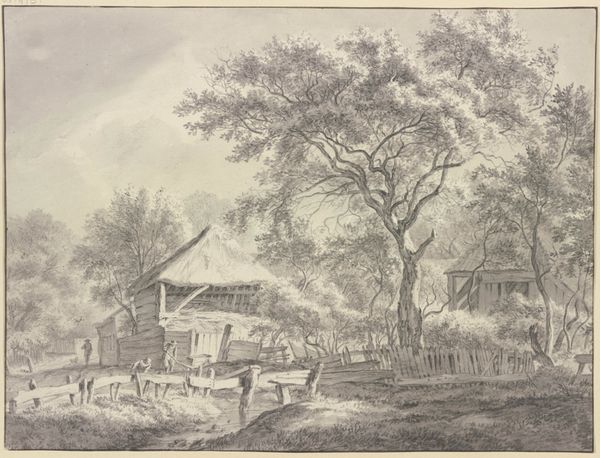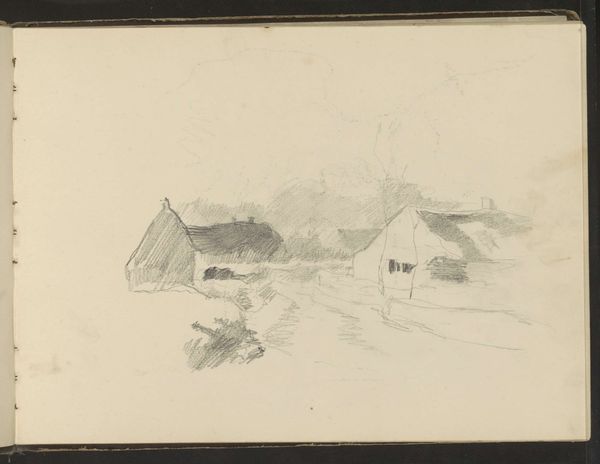
drawing, plein-air, watercolor, pencil
#
drawing
#
plein-air
#
landscape
#
watercolor
#
coloured pencil
#
romanticism
#
pencil
Copyright: Rijks Museum: Open Domain
Curator: This is "Bridge Over a Canal," a watercolor and pencil drawing, dating from around 1803 to 1818, by Arnoldus Johannes Eymer. It’s interesting that he did this plein-air. Editor: Immediately, I notice the muted palette and the hazy atmosphere. It evokes a kind of quiet melancholy, almost as if the scene is fading into memory. Curator: Eymer, as with many landscape artists of the period, was grappling with evolving social relationships to land and place in the context of emergent industrial capitalism and urbanization. How would you describe Eymer’s specific materials in creating the work, say relative to later iterations by others working on similar themes? Editor: He really relied on the materiality of pencil and watercolor to capture the fleeting quality of light and atmosphere. It speaks to the labor involved in creating this transient feeling, using readily available materials. The social context comes into play because we're viewing a rural scene which will certainly vanish as industrialization further encroaches. Curator: Absolutely. The Romantic idealization of nature, filtered through the lens of class privilege. Consider the artist's perspective: were these scenes truly accessible to all, or were they largely framed through a bourgeois gaze, one that distanced itself from the harsh realities faced by the working class? Editor: That’s key. This image isn't simply about aesthetic pleasure. Eymer highlights the bridge—an example of early infrastructure. Bridges facilitate exchange. We must examine how the labor of building and using that bridge, the means of transportation, affects social interactions and the distribution of resources at the time. The act of portraying that reflects on his place and ours within society. Curator: Indeed. By depicting the bridge, is Eymer commenting on mobility, on changing patterns of life for the upper classes versus working people? Perhaps we read that infrastructure into the colonial networks expanding trade through resource extraction and labor exploitation... Editor: Precisely. The seemingly innocuous landscape has underlying implications related to human movement and resource use, embedded within social context and material practices. It makes me reconsider art-making and seeing nature as interconnected with broader historical shifts. Curator: These discussions highlight how viewing art goes beyond pure aesthetics; the production of such works reflect an important dialog to political changes. Editor: It is an exercise in understanding art as being integrated in historical developments of our global landscape.
Comments
No comments
Be the first to comment and join the conversation on the ultimate creative platform.
